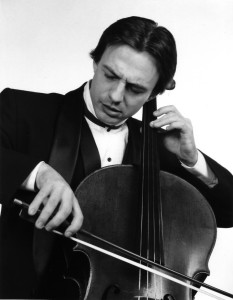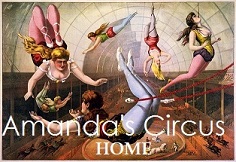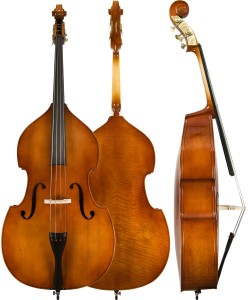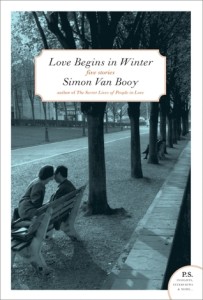The Stories of Simon Van Booy
My review of Simon Van Booy’s wonderful short story collection ‘Love Begins in Winter’ is online at Thresholds here. It’s always worth investigating the Thresholds site because you’re bound to discover insightful short story advice or a reading suggestion that you hadn’t thought of.
‘Love Begins in Winter’ is a collection of love stories. I found them beautiful and also interesting because Van Booy’s use of structure is unusual in several of the stories. He uses viewpoint and shape to develop character and evoke an emotional response. But I won’t go on because it’s all in the article (which I’ve pasted below). I’ll just add, because, weirdly, I happen to know, that the cover picture is of the machine head and scroll of a double bass, not a cello as you might expect since the main character of the title story is a cellist. Look…
Double Bass
…totally different.
Here’s a draft of the Thresholds article but do follow the link (above) to the site for lots of short story inspiration. Anyway, I hope you enjoy my article. And here’s a picture of a different cover.
I’ve returned to some of the stories in Simon Van Booy’s collection Love Begins in Winter several times, and I always find surprises. In that respect, it is the literary equivalent to great music, but written in prose that is elegant, spare and startling.
Van Booy treats his characters and the human condition with reverence. His people are rooted in broken worlds and yet they carry on, estranged from their lives. These are love stories of great beauty and hopefulness. The title story tells us:
The most important notes in music are the ones that wait until the sound has entered the ear before revealing their true nature. They are spaces between the sounds that blow through the heart, knocking things over.
It is in these spaces that you will find Van Booy’s characters. They are quiet people who have been battered by life, but instead of becoming ungenerous or aggressive, they have turned themselves inward.
The title story, written in two first person voices, has a wonderful symmetry about it – not unlike the Bach Cello Suites that are mentioned within the tale. It is about Bruno, a French cellist in his thirties, and begins in Canada. At the start, he is about to go on stage: ‘My name is Bruno Bonnet. The curtain I stand behind is the color of a plum. The velvet is heavy. My life is on the other side. Sometimes I wish it would continue on without me.’
 This theme of disconnection continues in each of the five stories that form the collection. Bruno is haunted by the image of a dead childhood friend, Anna, whom he loved and whose image comes to him when he performs. Van Booy is a professional philosopher and he gives us plenty to think about, but always with impeccable rhythm and timing. While Bruno is playing, we have one of Van Booy’s beguiling moments of wisdom: ‘I think music is what language once aspired to be. Music allows us to face God on our own terms because it reaches beyond life.’
This theme of disconnection continues in each of the five stories that form the collection. Bruno is haunted by the image of a dead childhood friend, Anna, whom he loved and whose image comes to him when he performs. Van Booy is a professional philosopher and he gives us plenty to think about, but always with impeccable rhythm and timing. While Bruno is playing, we have one of Van Booy’s beguiling moments of wisdom: ‘I think music is what language once aspired to be. Music allows us to face God on our own terms because it reaches beyond life.’
All Van Booy’s characters tend to daydream. The everyday world has become more fascinating than themselves and it distracts them and constantly surprises us. As Bruno is wandering the streets of Montreal in the rain, he observes,
The road surface is slick. It reflects the world with a beautiful inaccuracy.
My old geography professor once told his class how the music, paintings, sculptures and books of the world are mirrors in which people see versions of themselves.
There is something about the rain slipping down the hill that prevents me from moving.
Bruno is a memorable and enticing character, yet the structure of this story means that we are often jolted, just as Bruno is, not only by his observations and forays off subject but also by the change of voice, location and background when we enter the viewpoint of Hannah. We’re introduced to Hannah gradually. It is almost as if we are reading several different stories. Switching viewpoint is a risky business for the short story writer and here we move some distance away from either Bruno or Hannah. Firstly, we encounter a mysterious third person section describing the birdman of Beverley Hills whose name is Jonathan, following that a woman with acorns in her pockets overhears a conversation about the birdman, the next shows Jonathan, the woman’s baby brother, and after two more sections Bruno crashes into Hannah in a hotel corridor. He is carrying a hatbox full of stones and she is holding a handful of acorns. Everything is scattered across the floor and Bruno observes: ‘I saw her eyes as clearly as if we had been pressed against one another in a very small space.’
Soon after, we fully enter Hannah’s viewpoint, and the previous sections on the birdman and Jonathan start to make sense. Van Booy has used viewpoint not only to introduce Hannah but also to show her detachment. This is how Hannah sees Bruno:
A person with important messages but who has lost all memory of where he is going. And then I gasped because that was a description of me. Perhaps all my opinions of other people are opinions of another self.
We begin to realize that both characters are seeking another version of themselves and before long we return to Bruno, and the stories are joined. This is beautifully executed but would not have been successful if Bruno had not been such a captivating character.
It’s worth noting that Van Booy’s characters are kind to one another; they’re decent people, they want the best for each other and you can trust them. At least, you can almost trust them – after all, writers exploit their readers in many ways – here, there are no outright villains. So where’s the conflict? The conflict comes from within.
One of the interesting elements of ‘Love Begins in Winter’ is how it ends with the past and the dead people who have haunted the lives of Hannah and Bruno – it has a knockout last line and a strong sense that the story continues as Bruno observes:
The shadows remain.
Gifts from the fallen….A gentle reminder that what we have is already lost.
I would have liked to read more about these characters.
Several of the stories in the collection are interestingly constructed and alter the pace of our reading. ‘The Missing Statues’ is a story within a story. The interior story is set in Los Angeles and is about a young mother and her son. The mother is suspicious of the kindness offered to her by a stranger. This story is framed by the image of a young diplomat sobbing on a park bench in Rome and being comforted by a priest. It is not my favourite story in the collection, but the ‘sobbing’ scene is so well done, cleverly manipulating an emotional response to the main story from the reader, it takes you by surprise. The ending, part of the framing story, reflects on the interior story:
And before parting, the two men thought of a lone gondolier paddling the canals of a swimming pool in the Nevada desert – reeling in the forsaken with the song he had once sung to his daughter on a farm in Wisconsin.
Another compelling story is ‘The Coming and Going of Strangers’. It is about Walter, a young man descended from gypsies who has fallen in love with Jane, a Canadian girl whose parents have recently died. It is set in Wicklow, Ireland, and is divided into six sections. Each section is given a title and is a story in itself, although entirely related to the life and history of Walter. In ‘The Canadian Orphan’, Walter sees Jane for the first time and almost crashes his motorbike into a tree. Again, there are examples of kindness against a background of hardship and discrimination. ‘The Trampolining Gypsy’ tells the story of Walter’s love for Uncle Ivan ‘the only Gypsy (and Irishman) in history to win a gold medal at the Olympics’.
One might think that such a relentless strand of kindness in a collection might become dull, but the prose, characterisation and inner conflict prevent this. ‘The Gypsies on the Hill’ tells of the bravery of Walter’s grandfather and explains why the villagers accepted this Romany family into their community without the usual prejudice. In ‘Walter’s Journey Through the Rain’, the lovesick Walter has wheeled his motorbike through the rain to Jane’s house:
There were scabs of mud on the black fuel tank of Walter’s motorbike. Leaves and sticks had caught in the spokes and marked the stages of his journey in their own language. Light had not yet drained from the world, yet the moon was already out and cast a skeletal spell upon the bare branches of trees.
Everything is significant in Van Booy’s world. As a writer this makes me aware of the decisions I might make about imagery and words, just as, in music, a single note added to a chord can create dissonance or harmony. And all these small significances culminate in a collection that is as rich in ideas and language as it is in emotion and they compel the imagination to dance. If you’re thwarted by love or by life, or are entranced by wisdom and hope, and if you love words that melt into poetry, take a look at ‘Love Begins in Winter’. No matter what the time of year.







